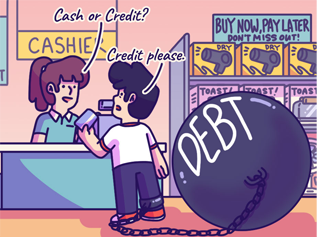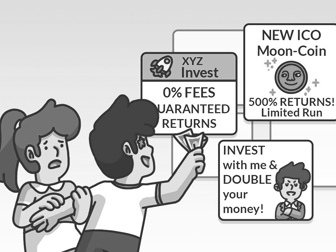Travel
Don’t Overpack, Pack Smart Instead For Your Next Holiday
Have you ever gone on a trip, and, as soon as you reach your hotel, realise you forgot to pack your toothbrush? Or bought so many souvenirs that you ended up having to pay extra for overweight luggage? Well, you’re definitely not alone.When we travel, almost all of us have made these little “mistakes” that end up costing us time, money, and a lot of unnecessary stress. Because while traveling itself is exhilarating, packing for it often feels like a chore. Yet, the way we pack can make or break a trip. That’s why learning to pack well can save you not only stress but also money.Here are five simple ways you can pack more efficiently and stretch your travel budget:1. Start with the essentialsJust like when you create a budget, the first step in packing is to cover all the essentials. Think passport, identification card, travel documents, cash, and your credit or travel card. Forgetting any of these could mean having to book the next flight while you rush home to retrieve these items.And if you plan to use your credit card overseas, let your bank know your travel dates. Otherwise, your card could be blocked, leaving you with a few frustrating options. You might have to withdraw cash from another card, often with high cash advance fees and interest. Or, desperate to make a payment, resort to exchange cash at a poor rate or use unofficial services. On top of that, to activate your card, you’ll have to make expensive international calls to your bank.A little planning goes a long way and helps ensure your trip starts off smoothly.2. Toiletries and personal careToiletries are sneaky budget-busters. Those little bottles of shampoo, conditioner, and body wash might seem harmless, but they hold quite a bit of weight, which can translate to extra check-in luggage fees.If you’re a light packer, you can skip check-in luggage altogether and stick to a carry-on. This can save you a significant chunk of money. Just remember to pack your liquids in travel-sized bottles (usually, liquids should be in containers of 100ml or less, but rules may vary by airline or airport).And instead of buying travel-sized toiletries every time you travel, buy empty reusable bottles so you can refill them before every trip.Even better – check with the hotel you are staying at if they provide toiletries. Many do, so you might not even need to pack a single bottle at all!For longer trips, especially if you are travelling to countries where toiletries are inexpensive, consider buying them locally. It can be more cost-effective than lugging around multiple 1litre bottles for the whole family for two weeks.3. Pack versatile clothingClothes can take up a lot of space in your luggage, so the trick is to pack versatile pieces. Go for items that mix and match easily so you can create multiple outfits without overpacking.One way you can do this is by packing lightweight items that can be layered to suit the weather each day, without adding bulk.Check if your accommodation has laundry facilities. If it does, you can pack even lighter and wash your clothes halfway through your trip. Quick-dry and wrinkle-free fabrics are perfect for travel too, as they are easy to handwash and dry so quickly they are ready to wear again in no time.4. Health and safetyPacking your medication and basic health supplies isn’t just convenient – it can also save you a lot of time and money while you’re abroad.If you take prescription medication, make sure to bring enough for your entire trip. Trying to find a pharmacy overseas can be expensive and stressful, and let’s be honest – who wants to be hunting down a chemist when you can be relaxing on the beach.Also, since anything can happen when you’re travelling, pack a few basic first-aid essentials such as pain relief tablets, medication for food poisoning and indigestion, antibacterial spray, and plasters, just in case.For those travelling with kids, don’t forget a thermometer and some fever, flu, and cough medicine. That way, you’re always ready if your little one starts feeling under the weather.While packing these items might feel unnecessary or take up extra space in your bag, your health kit could end up saving your whole trip by keeping small issues from turning into expensive emergencies.5. Savings on the goWe use our gadgets for everything while travelling, from research and navigation to even paying for items. So, it’s important to make sure they’re in tip-top condition. Bring a universal adapter so you are prepared for whatever plug type your accommodation uses, and a power bank so your phone stays charged and never dies. Getting lost in a foreign country is not only frustrating and potentially dangerous; it can also be costly if you end up taking a taxi to reach your destination.To save money while you’re out exploring, bring a reusable water bottle so you’re not constantly buying single-use drinks. Also, since airports and tourist spots tend to mark-up food and drinks, bringing a snack can save you some money if all you need is just something light between meals.Once you’ve levelled up on your packing game, you’ll travel lighter, avoid unnecessary fees, and have a bit more money to enjoy your trip. After all, what you really want to bring home from a trip are the memories, and not the long bills.


Here’s How You Can Turn Everyday Spending Into Miles For Your Next Holiday

I Booked An Expensive Holiday Trip Because Of A Friend… Who Didn’t Even Come

When An ‘Expensive Holiday’ Costs More Than Just Money

From The Jingle Of Coins To The Whisper Of Cards

Matcha Shortage Worldwide: If You Can’t Whisk Them, Join Em’ Alternatives

Why Are Singaporeans Obsessed With Travelling?

5 Viral TikTok Travel Spots That Are Wanderlust-Approved

Inflation Threw Buying Souvenirs For Friends Out The Window

From MRT To Mountains: Is The Working Holiday Life Your Ticket Out Of Singapore?
















